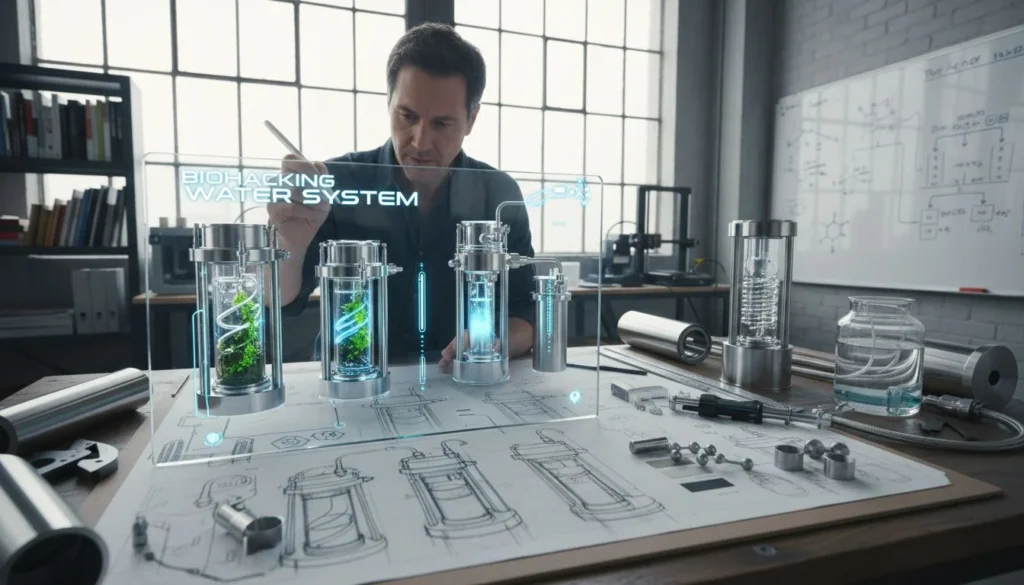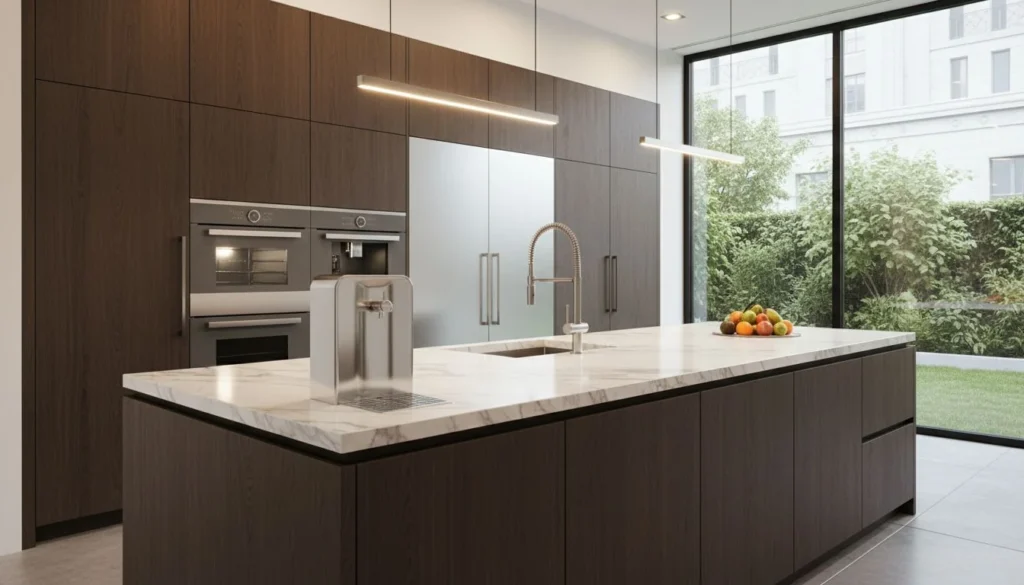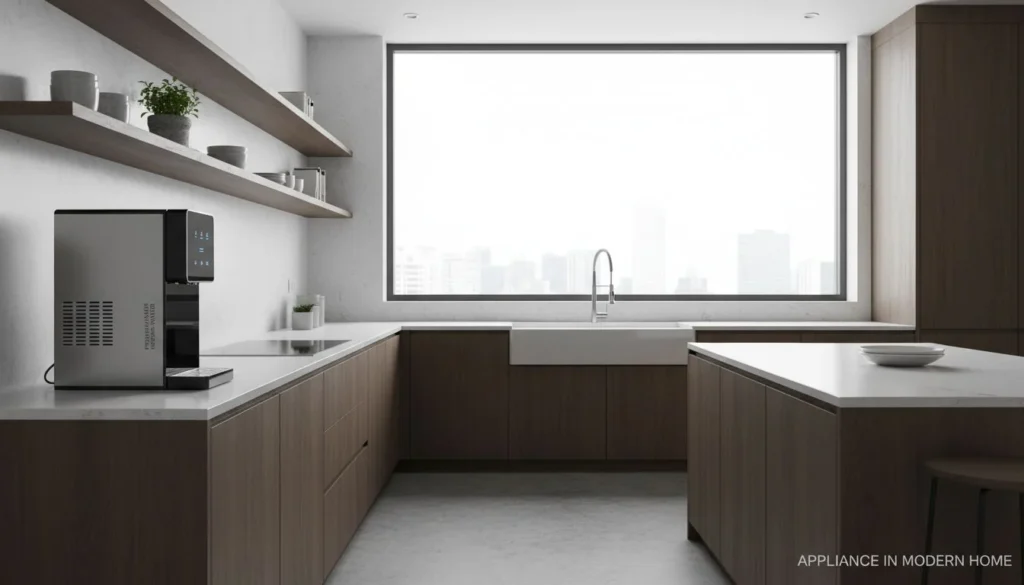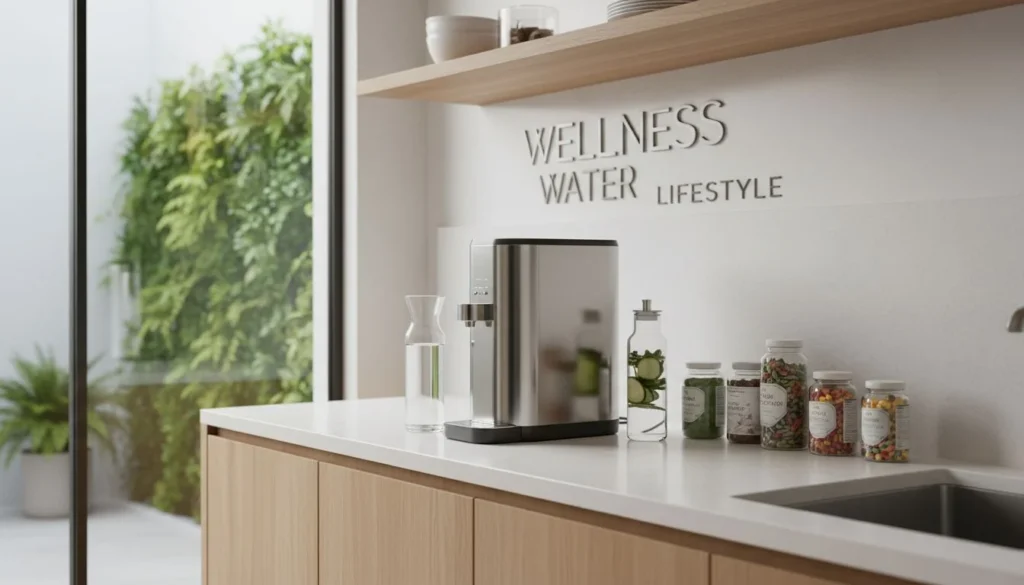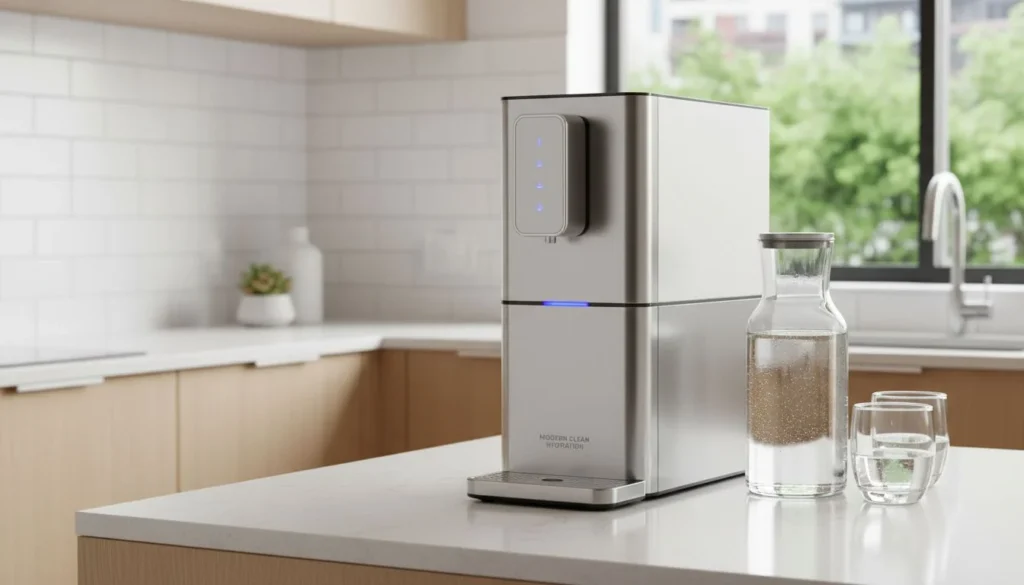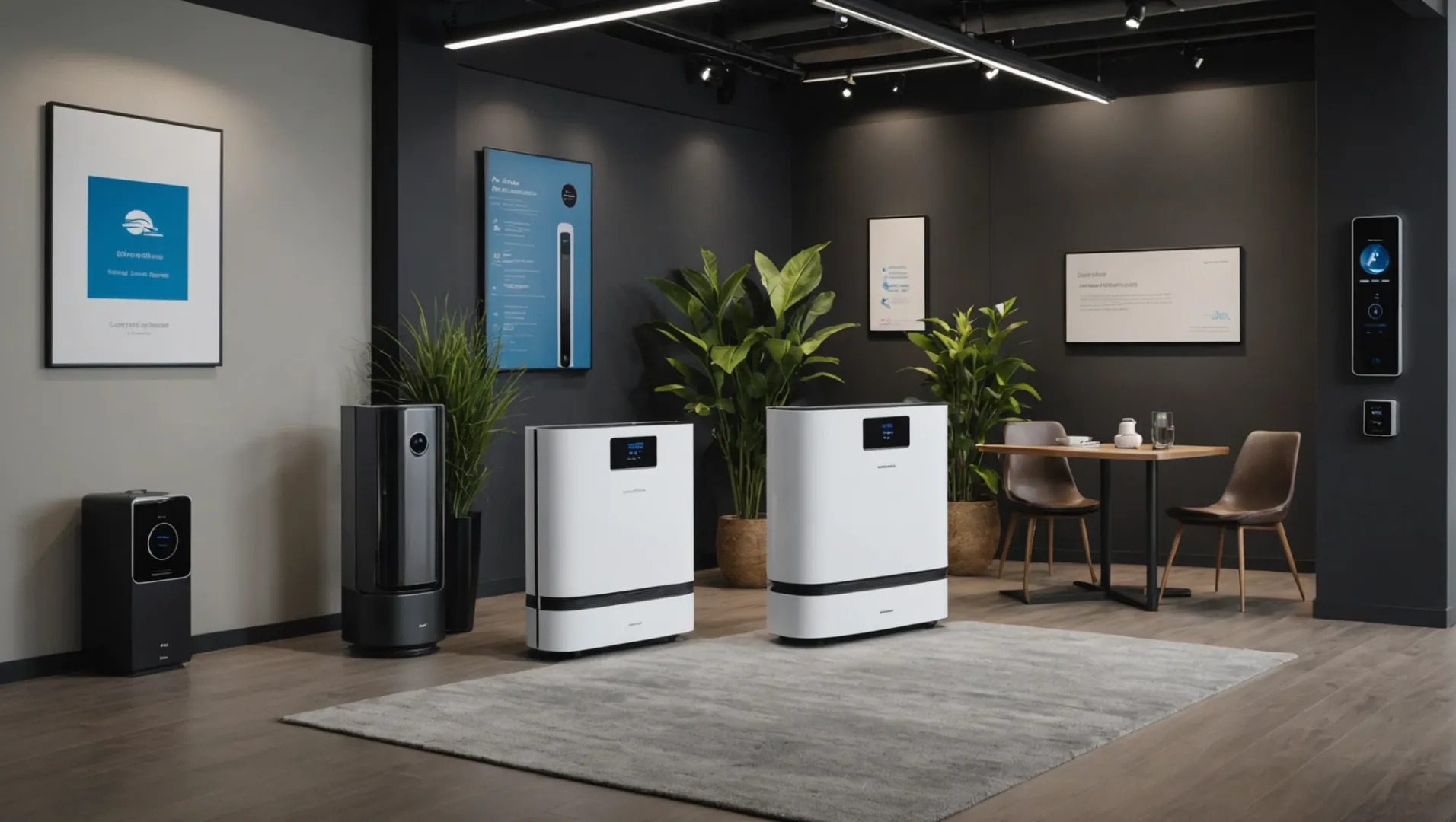
Nella mia ricerca di un'aria più pulita, ho scoperto che per trovare il miglior affare su un purificatore d'aria non basta guardare il cartellino del prezzo. Si tratta di capire cosa c'è sotto quei numeri.
Per confrontare efficacemente i prezzi dei purificatori d'aria tra i vari fornitori, è necessario concentrarsi su caratteristiche chiave quali CADRlivello di rumorosità e tipo di filtro. Assicuratevi di valutare specifiche simili per fare un confronto equo, considerando sia il costo che le prestazioni.
Sebbene il prezzo sia fondamentale, la comprensione delle sfumature delle caratteristiche dei purificatori d'aria può davvero far prendere una decisione d'acquisto. Unitevi a me nell'esplorazione di ciò che conta davvero!
Il CADR è la caratteristica più importante da confrontare.Vero
Il CADR misura l'efficienza del purificatore d'aria, fondamentale per la valutazione delle prestazioni.
Su quali caratteristiche bisogna concentrarsi quando si confrontano i depuratori d'aria?
La scelta del purificatore d'aria giusto richiede un'attenzione particolare alle caratteristiche specifiche che influiscono sulle prestazioni e sul valore.
Quando si confrontano i purificatori d'aria, concentrarsi su CADRI livelli di rumorosità, i tipi di filtro e altre funzioni intelligenti garantiscono una qualità dell'aria ottimale e la comodità dell'utente.
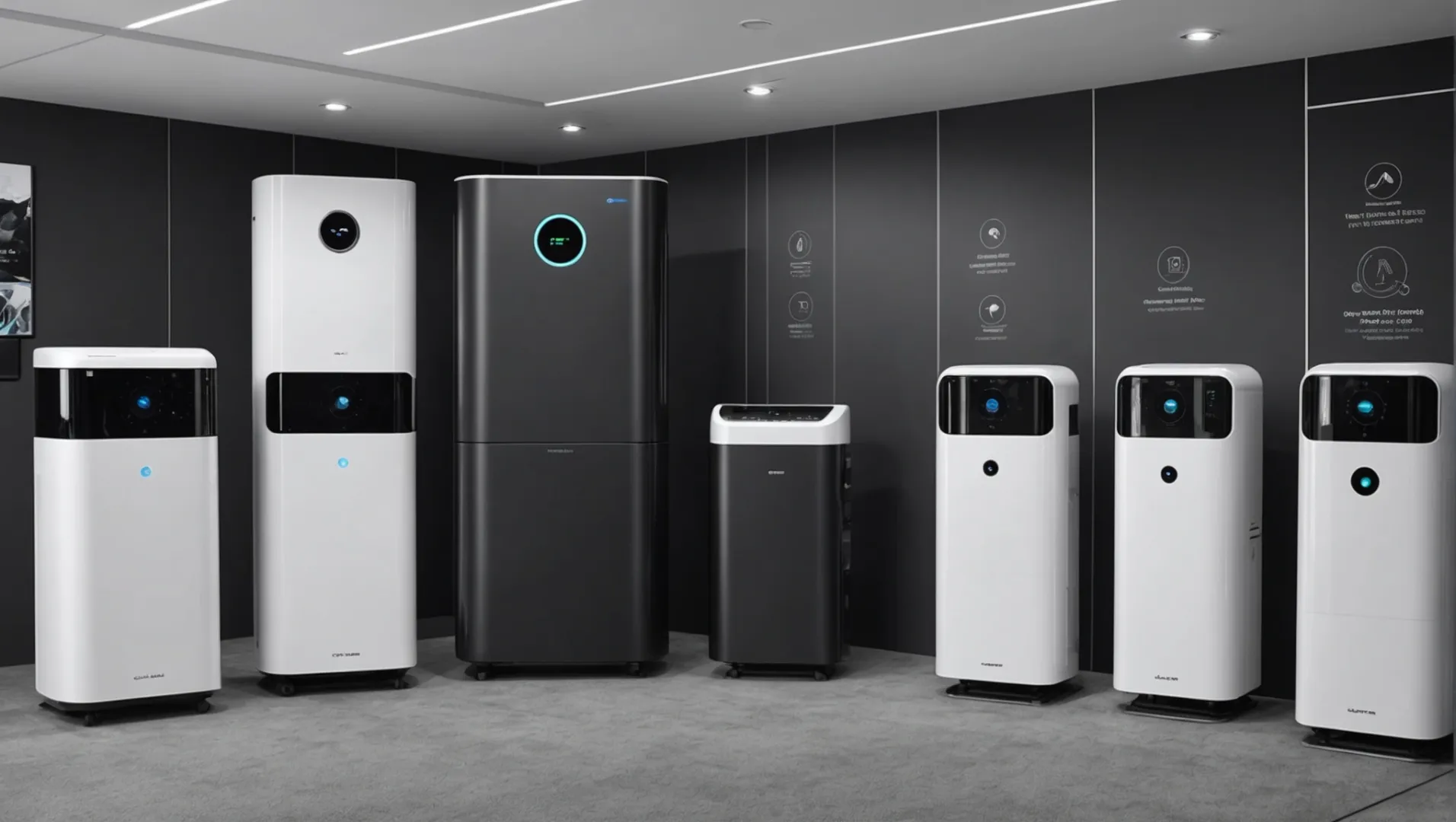
Comprensione CADR e la sua importanza
Il tasso di erogazione di aria pulita (CADR) è una misura fondamentale nella valutazione dei depuratori d'aria. Indica il volume d'aria filtrata che un purificatore d'aria produce al minuto, e che influenza l'efficienza con cui pulisce una stanza. Un valore più alto CADR valore significa una purificazione dell'aria più rapida.
Confronto CADR I valori dei modelli con specifiche simili per dimensioni della stanza aiutano a valutare quale dispositivo offre prestazioni migliori. Ricordate, corrispondere al CADR1 per le dimensioni della stanza è essenziale per un'efficace purificazione.
Valutazione dei livelli di rumore
I livelli di rumorosità possono avere un impatto significativo sul comfort, soprattutto se il purificatore d'aria viene utilizzato in una camera da letto o in un ufficio. Controllare i livelli di decibel forniti dal produttore. Modelli che offrono Tecnologia di cancellazione dei decibel2 possono garantire un funzionamento più silenzioso, migliorando l'ambiente senza distrazioni.
| Modello | Livello di rumore (dB) |
|---|---|
| Modello A | 40 dB |
| Modello B | 50 dB |
| Modello C | 35 dB |
Considerare i tipi di filtro
Il tipo di filtro gioca un ruolo fondamentale nella scelta degli inquinanti che il purificatore d'aria è in grado di eliminare. I filtri più comuni sono HEPA, carbone attivo e filtri a luce UV. Ognuno di essi ha una funzione diversa:
- HEPA Filtri: Cattura particelle di 0,3 micron, tra cui polline, polvere e fumo.
- Filtri a carbone attivo: Eliminare gli odori e gli inquinanti gassosi.
- Filtri per luce UV: Uccidono batteri e virus.
Valutare quali tipi di filtro3 si allineano alle vostre esigenze specifiche, come la riduzione delle allergie o l'eliminazione degli odori.
Caratteristiche intelligenti aggiuntive
I moderni depuratori d'aria sono dotati di funzioni intelligenti come le funzionalità IoT per il controllo remoto, le regolazioni basate su sensori e l'integrazione con i sistemi di automazione domestica. Caratteristiche come il monitoraggio della qualità dell'aria in tempo reale o i controlli tramite app possono offrire una notevole comodità e funzionalità.
Considerate se questi Caratteristiche intelligenti4 sono essenziali per il vostro stile di vita e come possono migliorare l'usabilità e l'efficienza generale.
Un CADR più elevato significa una purificazione dell'aria più rapida.Vero
Il CADR misura il volume di aria filtrata al minuto, influenzando la velocità.
I filtri HEPA eliminano gli odori dall'aria.Falso
I filtri HEPA catturano le piccole particelle ma non eliminano gli odori.
Perché è importante valutare le tecnologie specifiche dei fornitori?
La comprensione delle tecnologie uniche offerte dai fornitori può influenzare drasticamente la vostra decisione di acquisto.
La valutazione delle tecnologie specifiche dei fornitori è fondamentale perché influenza la qualità dei prodotti, l'efficacia dei costi e l'innovazione. La comprensione di queste offerte uniche consente di prendere decisioni informate in linea con le proprie esigenze e i propri obiettivi aziendali.

Comprendere le offerte tecnologiche uniche
Quando si confrontano i purificatori d'aria, non si tratta solo del costo iniziale o delle caratteristiche standard come CADR (Clean Air Delivery Rate) e il livello di rumore. Le tecnologie specifiche dei fornitori possono offrire vantaggi unici che differenziano un prodotto dagli altri. Ad esempio, la tecnologia di cancellazione dei decibel di HisoAir riduce significativamente il rumore, il che potrebbe essere un fattore decisivo per i clienti che privilegiano il funzionamento silenzioso. Questa innovazione potrebbe giustificare un prezzo più alto a causa del suo valore aggiunto.
Il ruolo dell'innovazione nell'efficienza dei costi
L'innovazione dei fornitori spesso porta a soluzioni più efficaci dal punto di vista dei costi. Tecnologie come quella dei motori a tempesta possono migliorare l'efficienza, riducendo il consumo energetico e i costi operativi a lungo termine. Valutando queste innovazioni, le aziende possono stabilire se l'investimento iniziale porterà a un risparmio nel tempo. È importante soppesare i vantaggi tecnologici5 rispetto al prezzo per garantire un investimento oculato.
Costruire solide relazioni con i fornitori
Comprendere e sfruttare le tecnologie specifiche dei fornitori può anche favorire partnership più forti. Quando i fornitori si accorgono che apprezzate le loro innovazioni, possono migliorare le trattative sui prezzi e le collaborazioni, in particolare per quanto riguarda ODM (Original Design Manufacturer). Richiesta di una distinta base (BOM) da parte dei fornitori quando si gestiscono grandi volumi, consente un confronto trasparente dei costi e mette in evidenza eventuali vantaggi tecnologici unici.
| Caratteristica | Fornitore A | Fornitore B |
|---|---|---|
| CADR | 300 m³/h | 280 m³/h |
| Livello di rumore | 45 dB | 50 dB |
| Cancellazione dei decibel | Sì | No |
| Tipo di filtro | HEPA | Carbonio |
| Tecnologia innovativa del motore | Sì | No |
Garantire il vantaggio competitivo
Infine, la valutazione di queste tecnologie garantisce la competitività della vostra catena di fornitura. Un fornitore con una tecnologia superiore può fornirvi prodotti che offrono prestazioni migliori o caratteristiche uniche, dandovi un vantaggio sul mercato. Questo vantaggio competitivo è fondamentale per mantenere la soddisfazione dei clienti e per ottenere un successo aziendale a lungo termine.
Concentrandovi su tecnologie specifiche per i fornitori, non solo migliorate la vostra offerta di prodotti, ma rafforzate anche la vostra posizione di mercato.
Le tecnologie specifiche per i fornitori possono ridurre i costi operativi.Vero
Innovazioni come la tecnologia dei motori a tempesta migliorano l'efficienza, riducendo i costi.
La valutazione delle tecnologie dei fornitori non influisce sulla qualità dei prodotti.Falso
La comprensione di queste tecnologie influenza la qualità, l'efficacia dei costi e l'innovazione.
In che modo il costo totale influisce sulla decisione di acquisto di un depuratore d'aria?
Quando si sceglie un purificatore d'aria, è fondamentale considerare il costo totale, non solo il prezzo iniziale.
Il costo totale di un purificatore d'aria comprende il prezzo di acquisto, le spese di manutenzione e i costi operativi. La valutazione di tutti questi fattori assicura la scelta di un modello che si adatti al vostro budget nel lungo periodo e che soddisfi le vostre esigenze di qualità dell'aria.
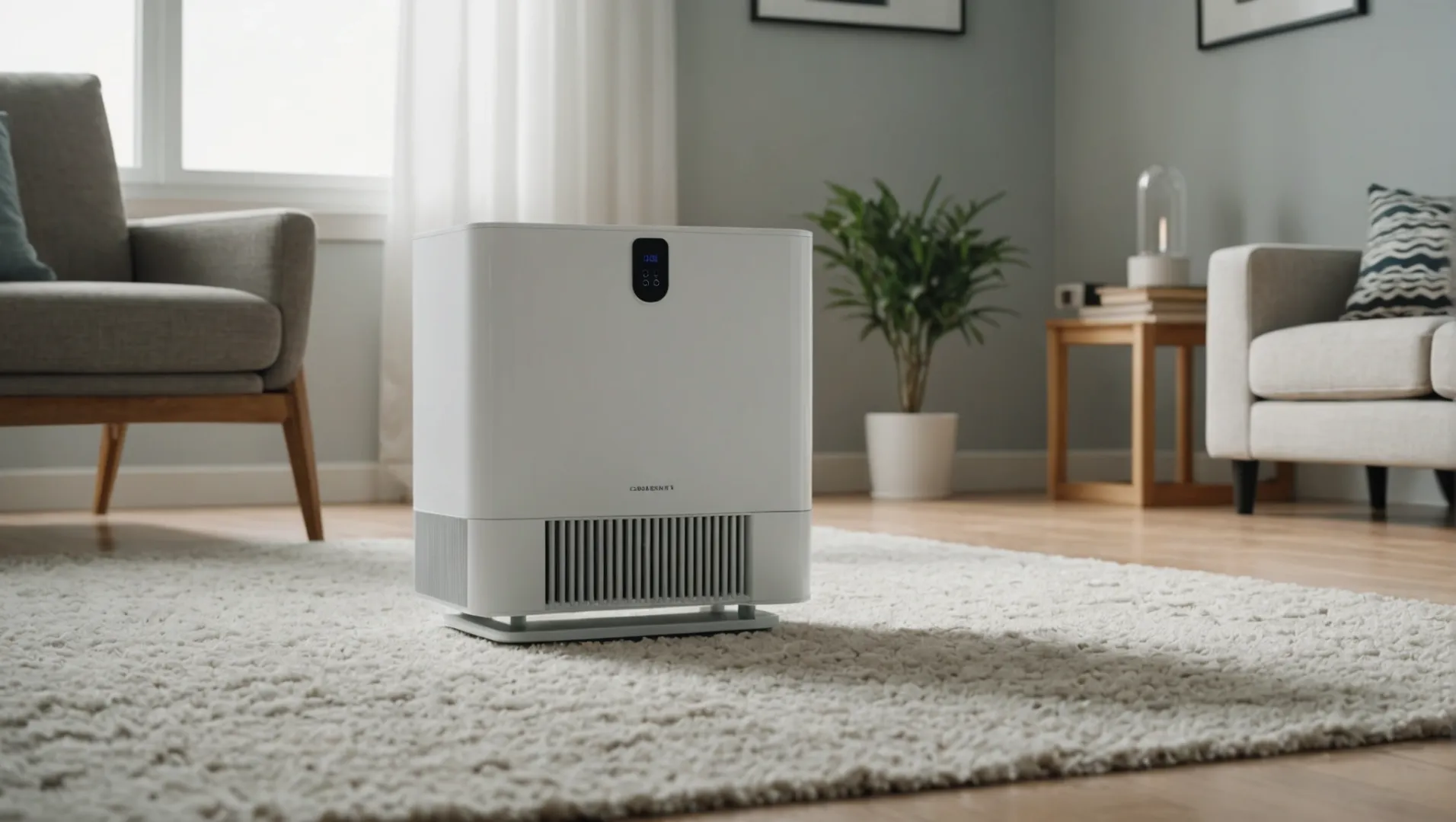
Comprendere le componenti del costo totale
Quando si valutano i depuratori d'aria, si considerano tre componenti principali del costo:
- Prezzo di acquisto iniziale: È il costo iniziale che si paga per possedere il purificatore d'aria. Varia significativamente in base a caratteristiche quali CADR (Clean Air Delivery Rate), il livello di rumore e il tipo di filtro. Un valore più alto CADR può significare un prezzo più alto, ma indica anche prestazioni migliori.
- Spese di manutenzione: La manutenzione regolare è fondamentale per ottenere prestazioni ottimali. Considerate il costo della sostituzione dei filtri, che può variare notevolmente in base alla marca e al modello del depuratore. Alcuni modelli offrono filtri permanenti che devono essere puliti anziché sostituiti, con un potenziale risparmio nel tempo.
- Costi operativi: Questo include il consumo di elettricità. I modelli ad alta efficienza energetica possono avere un costo iniziale più elevato, ma consentono di risparmiare a lungo termine riducendo le bollette energetiche.
Il ruolo delle tecnologie specifiche per i fornitori
Alcuni fornitori offrono tecnologie uniche che possono incidere sul costo totale. Ad esempio, HisoAir6 La tecnologia di cancellazione dei decibel non solo riduce il rumore, ma può anche contribuire a ridurre il consumo energetico. Allo stesso modo, la tecnologia Storm Motor potrebbe migliorare l'efficienza del flusso d'aria, riducendo potenzialmente i costi operativi.
Importanza della valutazione dei costi nel tempo
Per valutare il costo totale occorre guardare oltre le spese immediate. Un modello con un prezzo d'acquisto basso ma con costi di manutenzione elevati potrebbe essere più costoso a lungo termine rispetto a un'alternativa più costosa con esigenze di manutenzione minime.
| Componente di costo | Considerazioni esemplificative |
|---|---|
| Prezzo di acquisto iniziale | Caratteristiche come CADR, capacità IoT e tipi di sensori |
| Spese di manutenzione | Frequenza e costi di sostituzione dei filtri |
| Costi operativi | Consumo energetico e indici di efficienza |
Sfruttare il costo totale per migliorare la negoziazione con i fornitori
Se avete un volume di ordini significativo o siete coinvolti in un'operazione di ODM progetto, richiedendo un BOM (distinta base) dei fornitori può essere vantaggioso. Questa trasparenza consente di negoziare i prezzi in modo più aggressivo e consapevole.
Valutando in modo approfondito questi fattori, potrete assicurarvi che la scelta del purificatore d'aria sia in linea con il vostro budget e con gli obiettivi di qualità dell'aria, portando in ultima analisi a un'esperienza di acquisto più soddisfacente.
Un CADR più alto indica migliori prestazioni del purificatore d'aria.Vero
Il CADR misura l'efficienza di un purificatore d'aria nella rimozione degli inquinanti.
I filtri permanenti costano sempre di più di quelli sostituibili.Falso
I filtri permanenti possono far risparmiare nel tempo perché richiedono la pulizia e non la sostituzione.
Che ruolo hanno le recensioni e le valutazioni nel vostro processo di confronto?
Nell'affollato mercato dei purificatori d'aria, le recensioni e le valutazioni fungono da luce guida, illuminando il percorso verso una saggia decisione d'acquisto.
Le recensioni e le valutazioni forniscono esperienze di prima mano degli utenti e approfondimenti degli esperti, aiutandovi a valutare l'affidabilità e le prestazioni dei prodotti. Evidenziano i problemi e i vantaggi comuni, assicurando un processo decisionale ben informato.

Comprendere l'influenza del feedback degli utenti
Nell'era digitale di oggi, le recensioni e le valutazioni sono diventate parte integrante del processo di acquisto. Esse offrono informazioni autentiche da parte di persone che hanno già utilizzato il prodotto. Prendendole in considerazione, si ottiene una comprensione più chiara delle prestazioni reali di un purificatore d'aria, delle sue potenzialità e della sua efficacia. questioni7e caratteristiche di spicco.
Tipi di recensioni: Utente vs. Esperto
-
Recensioni degli utenti: Forniscono un feedback autentico da parte degli utenti di tutti i giorni. Spesso evidenziano aspetti pratici come la facilità d'uso, i problemi di manutenzione o le esperienze del servizio clienti.
-
Recensioni degli esperti: Spesso presenti su siti web di tecnologia o di consumatori, queste recensioni approfondiscono le specifiche tecniche e offrono confronti con modelli simili. Possono esplorare aspetti come CADR8 e la longevità del filtro in modo più dettagliato.
Valutare le recensioni in modo critico
Non tutte le recensioni sono uguali. Alcune potrebbero essere di parte o incentivate. Pertanto, è fondamentale:
- Cercare i modelli: Se più recensioni parlano di scarsa qualità costruttiva o di funzionamento rumoroso, queste potrebbero essere preoccupazioni legittime.
- Controllare la fonte: Verificate la credibilità della piattaforma di recensioni. Le fonti affidabili spesso presentano un mix di feedback positivi e negativi.
Valutazioni: Una rapida panoramica
Le valutazioni forniscono un'istantanea della soddisfazione dei clienti. Un prodotto con una valutazione elevata indica generalmente affidabilità ed efficienza. Tuttavia, è essenziale:
- Considerate il numero di valutazioni. Una valutazione a cinque stelle di dieci utenti è meno affidabile di una di mille.
- Cercate le valutazioni recenti per assicurarvi che il feedback rifletta il modello o la versione attuale del purificatore d'aria.
Sfruttare la reputazione nel processo decisionale
Dal momento che state confrontando diversi fornitori, un consiglio è quello di dire al fornitore A che state confrontando il prezzo e la qualità con il fornitore B; in questo modo farete pressione sul vostro fornitore e potrete ottenere un prezzo migliore. Tuttavia, per prendere una decisione, dovreste raccogliere alcune informazioni sulla reputazione del potenziale fornitore, che è essenziale per ridurre il rischio.
Conclusione
Soppesando il costo rispetto alla qualità e alla tecnologia, mi assicuro un acquisto intelligente che soddisfi le mie esigenze di qualità dell'aria.
-
Assicura una purificazione dell'aria ottimale adattando il CADR alle dimensioni della stanza: Questo articolo illustra le tre fasi essenziali per identificare le dimensioni adeguate di un purificatore d'aria e il modo in cui una metrica chiamata CADR può aiutare a farlo. ↩
-
Scoprite le tecnologie per un funzionamento più silenzioso dei purificatori d'aria..: I depuratori d'aria HiSo utilizzano la tecnologia Decibel Cancellation™, che consente di utilizzare filtri meno densi. Le particelle cariche aderiscono più facilmente, riducendo la necessità ... ↩
-
Aiuta a identificare i tipi di filtro più adatti alle proprie esigenze..: Quali sono i diversi tipi di filtri dell'aria? - Filtri HEPA - Filtri a luce UV - Filtri elettrostatici - Filtri lavabili - Filtri mediali - Filtri in vetro filato ... ↩
-
Scoprite come le funzioni intelligenti possono migliorare l'usabilità dei purificatori d'aria..: Tuttavia, un purificatore ben progettato è in grado di catturare praticamente tutti gli allergeni presenti nell'aria, come pollini e spore di muffa, oltre a batteri, virus e ... ↩
-
Scoprite come le innovazioni riducono i costi e migliorano l'efficienza dei depuratori d'aria..: Questo approccio innovativo riduce simultaneamente il particolato dalle dimensioni delle nanoparticelle fino a quelle più grandi, fino a 99%, oltre a rimuovere ... ↩
-
Scoprite come questa tecnologia riduce il rumore e fa risparmiare energia: I depuratori d'aria HiSo utilizzano la tecnologia Decibel Cancellation™, che consente di utilizzare filtri meno densi. Le particelle cariche aderiscono più facilmente, riducendo la necessità ... ↩
-
Scoprite le potenziali insidie prima di acquistare un purificatore d'aria: Un purificatore d'aria sottoposto a una manutenzione inadeguata presenta filtri sporchi o intasati, motori malfunzionanti e altri problemi che ne compromettono il funzionamento complessivo. ↩
-
Scopri perché il CADR è fondamentale per l'efficienza dei purificatori d'aria..: La scelta di un purificatore d'aria con un elevato punteggio CADR garantisce l'efficacia nella pulizia dell'aria da agenti inquinanti, come polvere, polline, fumo, ... ↩


